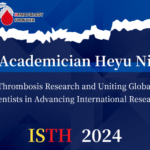
Editor's Note: With continuous advancements in medical research, treatment strategies for triple-negative breast cancer (TNBC) are also evolving. From June 14-16, 2024, the 5th Comprehensive Cancer Treatment Academic Conference of the Xinghai Medical Forum was held in the romantic city of Dalian. Multiple significant studies on TNBC treatment were highlighted at ASCO, including the application of platinum-based therapies, new adjuvant treatment models, intensified adjuvant treatments, and the use of immunotherapy and ADCs in (neo)adjuvant settings. Oncology Frontier invited Professor Bin Hua from Beijing Hospital and Professor Juliang Zhang from Xijing Hospital of Air Force Medical University discuss these latest research advancements in depth.Oncology Frontier: In recent years, the value of platinum-based therapies in systemic treatment for TNBC has become increasingly evident. The Korean PEARLY study reported at this ASCO conference explored the use of anthracyclines sequentially with taxanes, whether combined with carboplatin or not. What are your thoughts on the study results and the application of platinum-based therapies in neoadjuvant treatment for TNBC?
Professor Bin Hua: In the field of triple-negative breast cancer treatment, platinum-based regimens have been widely researched and recognized in neoadjuvant treatment. Particularly in this year’s Korean PEARLY study, we observed significant effects of this regimen in both neoadjuvant and adjuvant treatment settings. The study included patients undergoing neoadjuvant treatment (about two-thirds of the total) and those receiving adjuvant treatment post-surgery (about one-third of the total). In the neoadjuvant treatment group, the platinum-based regimen further improved the pathological complete response (pCR) rate on top of standard treatment. Among the overall patient population, the five-year event-free survival (EFS) saw an absolute improvement of approximately 7.2%. Although the P value for overall survival in the PEARLY study was at the threshold of significance, the absolute benefit was still 3.7%, demonstrating the potential value of platinum-based regimens in breast cancer treatment. The significance of this study lies not only in the neoadjuvant treatment field but also in the adjuvant treatment field, providing a new direction for early TNBC patients.
Compared to previous studies such as GeparSixto and BrighTNess, which also added platinum-based regimens to anthracycline and taxane-based neoadjuvant treatments, the PEARLY study showed similar positive results in improving pCR rates and five-year EFS. However, statistically significant improvements in overall survival were relatively less common. Notably, the 2022 TMC (Tata Memorial Centre) study achieved positive results in both primary endpoints (pCR and EFS), and also showed significant improvement in the secondary endpoint of overall survival (OS). Subgroup analysis of this study indicated that benefits were more pronounced in patients younger than 50 years old.
In the current era of innovative immunotherapy, platinum-based regimens also hold an important position in the neoadjuvant treatment field, as demonstrated by the Keynote-522 study. With the issuance of related guidelines and the accumulation of data, platinum-based chemotherapy regimens have gained widespread recognition in neoadjuvant treatment. We look forward to more pioneering data in the adjuvant treatment field in the future, bringing new treatment options to TNBC patients and improving their prognosis.
Oncology Frontier: The I-SPY 2.2 study reported at this year’s ASCO conference also included TNBC patients, using a novel RPS classification and preRCB prediction method. What do you think about this new neoadjuvant treatment model and the effect of Dato-DXd plus immunotherapy as a neoadjuvant treatment?
Professor Juliang Zhang : With a deeper understanding of breast cancer, an increasing number of targeted drugs and immunotherapies are gaining attention in clinical practice. However, determining whether these new drugs can be used in routine clinical practice requires evidence from large clinical trials. Traditional clinical trial processes, moving from Phase II to Phase III, are time-consuming. The design of the I-SPY platform aims to address this issue by allowing the simultaneous evaluation of multiple treatment strategies in patients, accelerating the screening process for breast cancer treatment strategies. Through the platform’s mechanism, the potential effect of each treatment strategy can be predicted, specifically the predicted pCR value. If a treatment strategy’s pCR value exceeds the statistical threshold, it has an approximately 85% probability of achieving superior results in subsequent Phase III trials.
Since 2010, I-SPY has evaluated 23 drugs, with 10 meeting the “graduation criteria” and successfully advancing to subsequent research stages. The platform introduced a significant concept in the I-SPY 2.2 study—the Response Predictive Subtype (RPS), combining expression-based immune markers, DNA repair deficiency (DRD), luminal markers, and molecular markers such as hormone receptors (HR) and HER2 to reclassify patients. In the upgraded I-SPY 2.2 study, this RPS classification was further validated. The I-SPY 2.2 study adopted a Sequential Multiple Assignment Randomized Trial (SMART) design, dividing the study into three phases. Phase A involves novel drugs without chemotherapy (subtraction); if the predicted Residual Cancer Burden (preRCB) is achieved (preRCB is determined by volumetric changes on functional MRI and biopsy), surgery is performed early; if not, the study moves to Phase B. In Phase B, based on RPS, taxanes are added to the novel drugs (first addition); if preRCB is achieved, surgery follows, otherwise, Phase C begins. Phase C involves the second addition with AC (anthracycline and cyclophosphamide) as salvage chemotherapy to ensure treatment continuity.
At this year’s ASCO conference, two studies based on the I-SPY 2.2 platform garnered attention. One study found that using Dato-DXd alone as neoadjuvant therapy allowed 32% (33 patients) to skip traditional chemotherapy and proceed to surgery, but it did not reach the statistical threshold to advance to Phase III trials. In another study, when Dato-DXd was combined with durvalumab, the model pCR for immune-positive (Immune+) subtype patients reached 65% after Phase A, a very positive result.
These studies not only validated the effectiveness of RPS classification but also provided new ideas for future clinical trial design. With ongoing research, we hope to more accurately classify breast cancer treatment subtypes, offering patients the optimal treatment regimen, achieving treatment escalation or de-escalation, and improving cure rates and quality of life for patients.
Oncology Frontier: Are there any additional safety considerations?
Professor Juliang Zhang : Indeed, as Professor Liu Hui mentioned, the safety management requirements for early TNBC may be stricter than for advanced stages. This is particularly relevant for immunotherapy and our consideration of its use in the adjuvant phase, which requires careful deliberation. At this stage, we must focus on both curing the disease and ensuring treatment safety. Even if a patient does not receive a particular treatment, they may still have a chance for a cure. However, once the treatment is included, we must carefully weigh its benefits and risks. Therefore, at this point, our attention to adverse reactions may be even higher. This is a key focus for clinicians in practice.
Professor Bin Hua: Regarding the treatment of early and advanced breast cancer, as mentioned by the two professors, our focus indeed varies. As a surgeon, I understand that we cannot tolerate situations where patients who could have had a chance at surgical treatment end up with severe organ dysfunction or death after undergoing our treatment. Therefore, in clinical practice, when involving immunotherapy, we must communicate thoroughly with patients at the outset, emphasizing the important aspects to monitor during treatment.
Before each treatment cycle begins, we must pay close attention to the patient’s reactions and potential issues. Only with full attention from clinicians can the effects of immune checkpoint inhibitors in clinical application be more significant and smooth. Currently, there is ample data confirming that this treatment method can bring long-term survival benefits to early TNBC patients. We cannot refuse to use this treatment method due to risk concerns, nor can we assume that no further management is needed after its use. We must ensure comprehensive treatment management to achieve the best therapeutic effect while minimizing potential risks.


